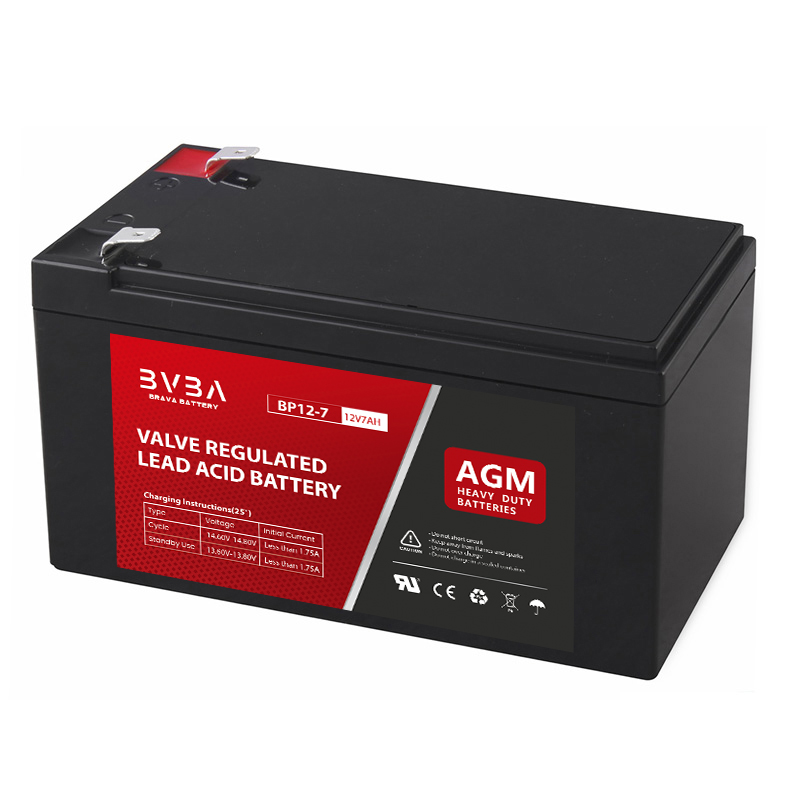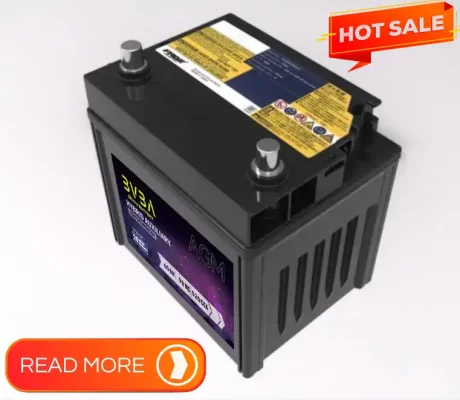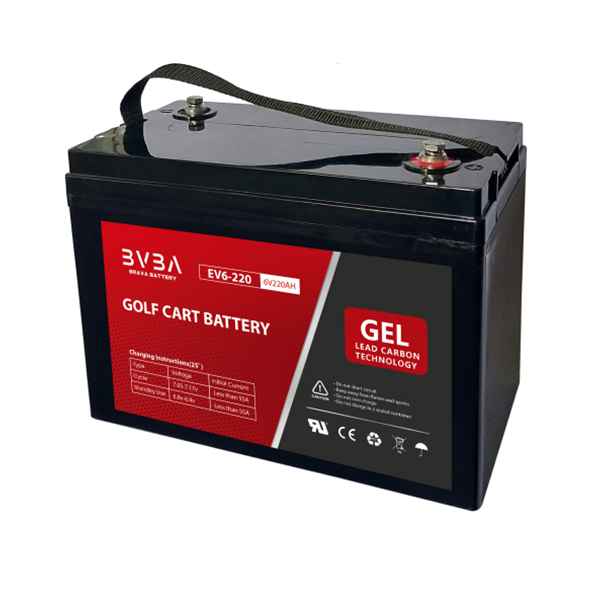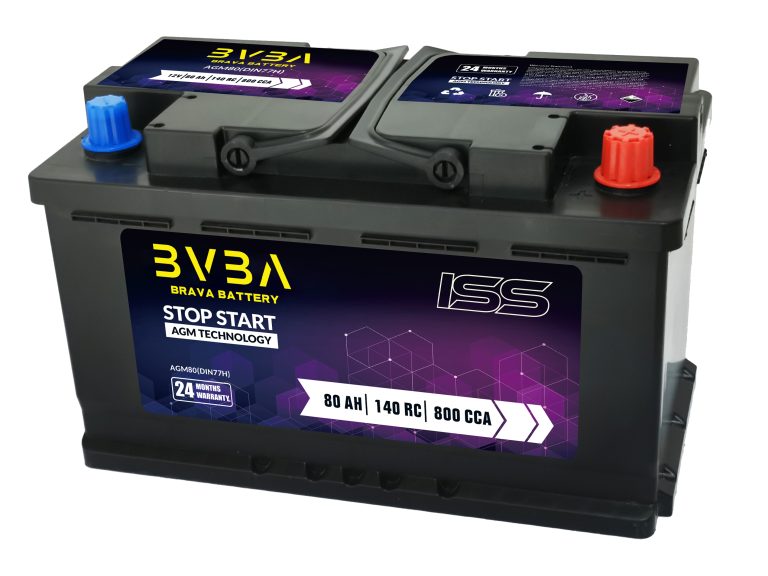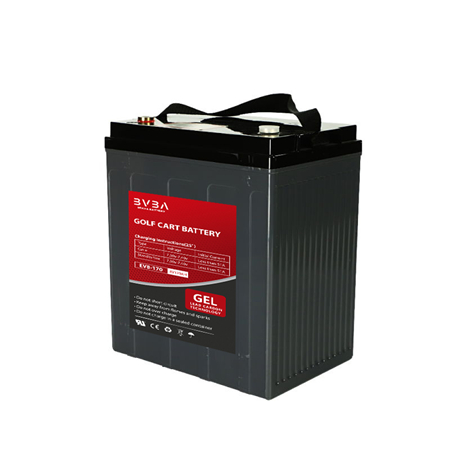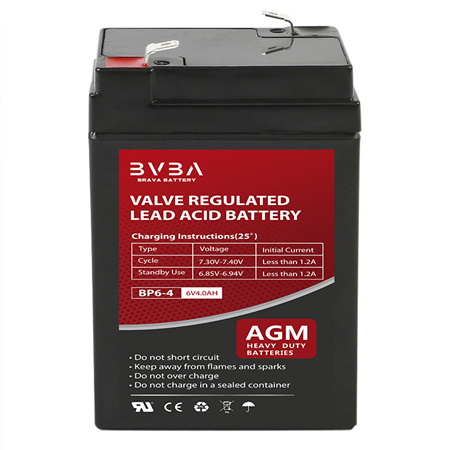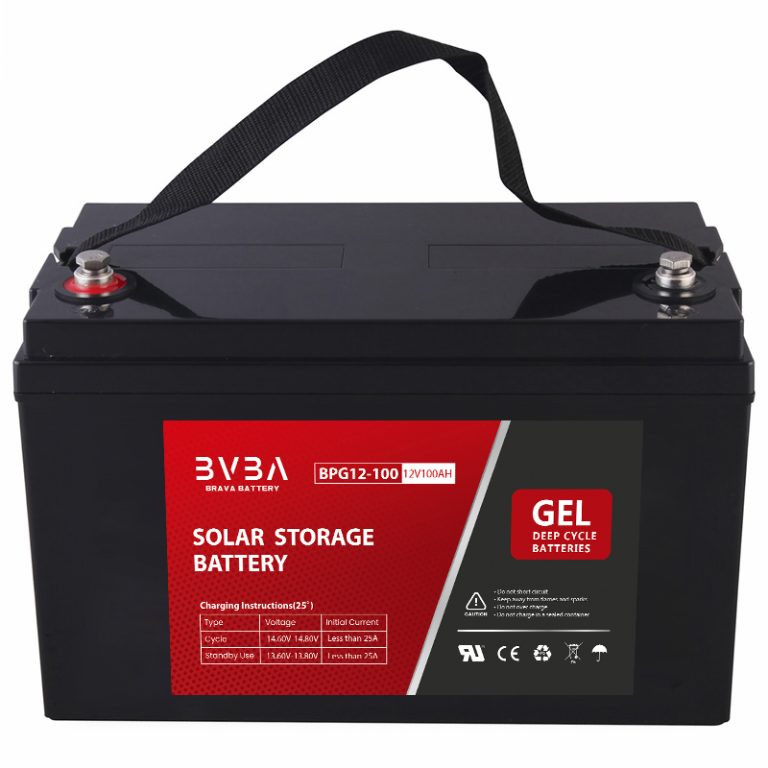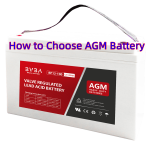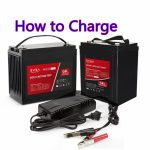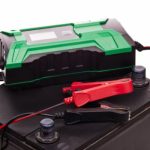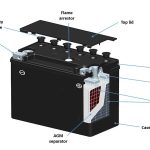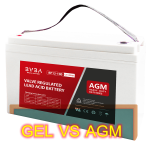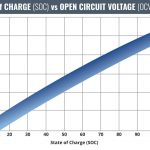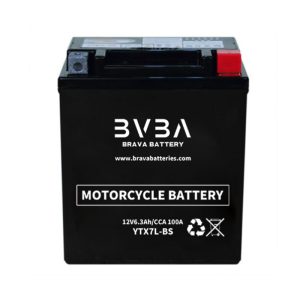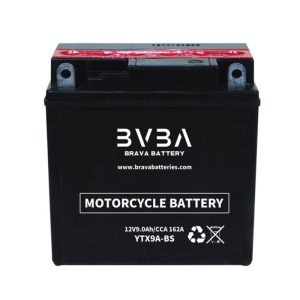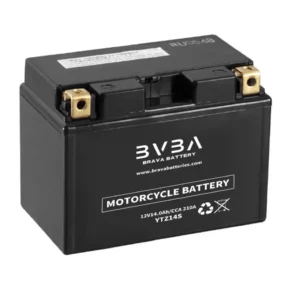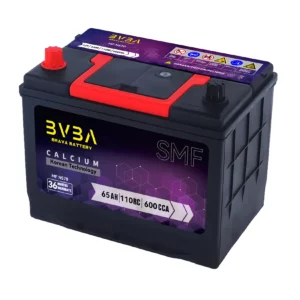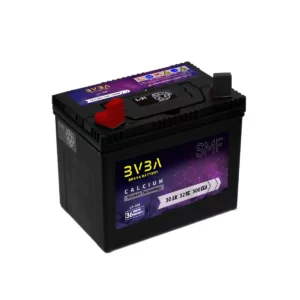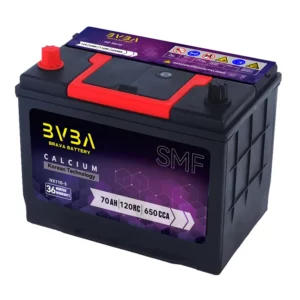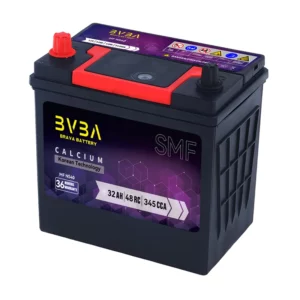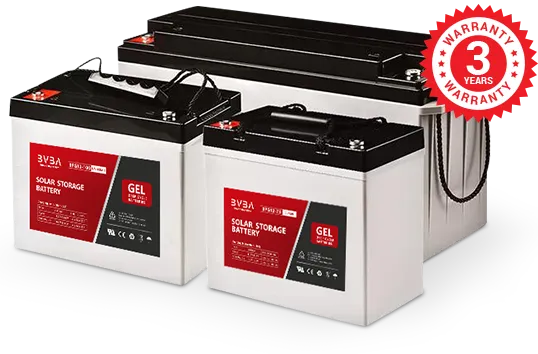The AGM battery found its early uses in military aircraft but has since made its way into many other applications, including modern start-stop vehicles.
But what makes the AGM battery different?
What are its benefits and drawbacks?
In this article, we’ll answer all those questions, add in some FAQs, and drop an easy solution to any AGM battery issues you may be facing.
What’s An AGM Battery?
The AGM battery is a type of sealed lead acid battery (also known as a Valve Regulated Lead Acid or VRLA battery).
AGM is short for Absorbent Glass Mat, which refers to the battery technology used.
Developed in the early 80s, absorbed glass mat batteries were designed as an alternative to NiCad (NiCd) batteries which were very costly.
Today, you’ll find this sealed battery in all manner of applications — from marine to aviation and even off-grid power systems like wind and solar. They’re also well-suited to advanced cars with start-stop technology and significant power demands.
Let’s now go through the inner workings of the AGM battery.
How Do AGM Batteries Work?
The secret to an AGM battery’s enhanced performance lies in an ultra-thin glass mat, sometimes called an AGM separator.
The fiberglass mats in AGM sealed batteries are sandwiched between the lead plates, soaking up the electrolyte. In this way, the electrolyte is suspended in a “dry” state instead of the free-flowing form found in conventional flooded batteries.
The glass mat maximizes the surface area for the electrolyte to react with the battery plates, allowing a fast reaction between the sulfuric acid and plate material.
Additionally, remember that this is a VRLA (Valve Regulated Lead Acid) battery.
What does the “valve” do?
The AGM battery electrolyte is typically a mix of sulfuric acid and water.
While charging, the chemical reaction produces hydrogen and oxygen.
The battery valve stops the gases from leaving, preventing water loss. These gases are reabsorbed into the electrolyte.
However, when there’s too much pressure (like when the battery is overcharged), the valve vents the gases. This helps equalize pressure and prevents structural damage to the battery.
Next, let’s see how AGM technology influences the battery’s features.
What Are The Pros And Cons Of AGM Batteries?
AGM technology batteries feature a host of benefits.
But they’re not perfect and have their downsides too.
Let’s look at the advantages first.
7 AGM Battery Pros:
Here are 7 benefits often associated with this glass mat battery:
1. Longer Lifespan
AGM batteries have a longer lifespan than the conventional battery — lasting up to 2x longer. These batteries also have a very low self discharge rate, so they also last longer when not in active use.
2. Generates More Starts
AGM batteries have the power to start a car engine more than 60,000 times. That’s about 3x more than what traditional batteries can do.
3. Lighter And More Durable
The glass mat in AGM batteries isn’t completely saturated with electrolyte, and the liquid doesn’t expand the way they do in a flooded lead acid battery.
Less electrolyte (compared to a flooded battery) means decreased weight.
No liquid expansion means the AGM battery can also withstand freezing.
And while you likely won’t get any power from a frozen battery, it won’t crack or damage the plates either.
4. Lower Internal Resistance Means Higher Power Output
The AGM battery has very low internal resistance, allowing it to deliver power quickly. This is an essential function of a car battery, which pushes rapid bursts of power to start the engine.
5. Faster Recharge And Better Depth Of Discharge
AGM batteries have excellent charge acceptance, which can extend their cycle life. The AGM battery can charge up to 5x faster compared to traditional batteries.
They also have 80% Depth of Discharge (DoD) — meaning they can discharge down to 80% of their original capacity without being damaged. Flooded batteries can typically discharge only down to 50% DoD.
The AGM battery’s deep discharge capability also allows it to adapt well to a deep cycle application. As a result, you’ll find AGM technology often applied to deep cycle battery formats — like those used in marine vehicles or UPS backup systems.
6. Vibration And Shock Resistant
The electrolyte-soaked glass mats in between the lead plates act like a damper. As the plates are packed fairly tightly, movement and vibrations are reduced to almost zero. This creates a battery that’s highly resistant to vibration and shock.
7. Non-Spillable And Maintenance-Free
The AGM battery is maintenance-free and doesn’t require any watering service. The absorbent glass mat between the plates holds the electrolyte in place, keeping it from spilling even when the battery is in odd positions. This allows for greater mounting flexibility.
Additionally, because the AGM battery is spill-proof, regulations are generally more relaxed about transporting them by air or road.
Now that we’ve looked at the advantages, let’s go over the drawbacks.
2 AGM Battery Cons:
Here are two common disadvantages of using AGM batteries:
1. Sensitive To Overcharging
The AGM battery has a lower tolerance to overcharging and high voltages when compared to flooded batteries.
2. More Costly
AGM batteries are more expensive than traditional batteries as they cost more to manufacture. On average, conventional batteries cost $65-$130, but an AGM can be around $200 upwards.
Now that you know what AGM batteries are, including their pros and cons, let’s go over some FAQs.
10 AGM Battery FAQs
Here are some answers to commonly-asked AGM battery questions:
1. Are AGM And Gel Batteries The Same?
The AGM and gel battery are often mistaken to be the same because they’re both “dry cell” lead acid batteries.
And while the gel cell is a VRLA battery too, it holds its electrolyte solution very differently.
Where the AGM battery uses an absorbent glass mat, the gel cell battery uses a chemical agent (like silica) to suspend the electrolyte in a gel form. The gel restricts movement, and so the battery becomes spill-proof.
Gel batteries don’t do as well as the AGM as a starter battery, so you’re less likely to find them performing that function in cars.
2. Are AGM Batteries Deep Cycle?
AGM technology is used in both deep cycle and starter battery applications.
“Deep cycle” is defined by plate thickness and not the battery technology, so an AGM deep cycle battery is used as often as a flooded or gel cell deep cycle battery.
3. What Are Flooded And Sealed Lead Acid Batteries?
In a flooded lead acid battery (FLA), the lead plates are suspended in a free-flowing liquid electrolyte. It’s a wet cell battery, meaning the battery can spill and requires regular electrolyte maintenance.
When you hear “conventional flooded batteries” or “traditional batteries” mentioned, it’s often referring to the flooded lead acid battery.
The sealed lead acid battery applies similar chemistry, but the electrolyte is suspended in a gel form (for gel cell batteries) or held by a glass mat (for AGM batteries).
4. How Is A Lithium Battery Different From AGM?
AGM and lithium batteries have their own benefits and drawbacks. The lithium ion battery is much lighter in weight, has a better cycle life, and can charge faster than the AGM battery.
Lithium ion batteries also have a flat discharge curve (meaning if you powered a torchlight with a lithium battery, the bulb won’t dim as battery power ran out, it’ll just go off).
However, AGM batteries are cheaper to produce, have a higher Cold Cranking Amps (CCA) rating, and are resistant to vibration.
It’s important to know that you can’t just swap the AGM starter battery in your car with a lithium ion battery, as your charging system probably isn’t set up to charge a lithium battery.
Tip: Always consult a mechanic on what battery type to use if you’re unsure.
5. Can I Charge An AGM Battery With A Regular Battery Charger?
No.
AGM batteries are sensitive to overcharging, so it’s essential to use a regulated battery charger. AGM battery chargers typically have microprocessors that adjust the current and voltage delivered to the battery to avoid overcharging.
6. Do AGM Batteries Work With Solar Panels?
Yes.
AGM batteries are useful for smaller, off-grid solar panel setups. An AGM battery bank would work for a solar panel system on a remote cabin with low energy demands, for example.
AGM batteries require no maintenance and have a relatively low upfront cost compared to lithium ion batteries, which are better for high energy draws in residential solar panels.
7. What Is A Start-Stop Vehicle?
Start-stop vehicle technology automatically turns off the engine when the car stops (like at traffic lights or in stop-and-go traffic).
While the engine is temporarily off, the car battery is the sole source of power to all the vehicle’s electrical devices, from stereo to GPS navigation. When the clutch is depressed, or the brake pedal is released, it restarts the vehicle quickly and quietly.
AGM batteries are suited to such start-stop applications.
8. What Is Battery Internal Resistance?
Internal resistance denotes a battery’s ability to deliver high currents without a significant voltage drop.
Any current that doesn’t go into the charging translates into heat, which is why batteries get warm during heavy charging. In extreme cases, thermal runaway can occur.
New flooded lead acid batteries typically have 10-15% internal resistance, while a gel battery has around 12-16%. AGM batteries have among the lowest internal resistance in commercial batteries, with some as low as 2% in new batteries.
9. What’s Thermal Runaway?
It’s when too much heat is generated in a battery that can’t be expelled accordingly. If this situation continues, temperatures will increase until the battery cells dry out and the container softens and melts.
Destruction from thermal runaway can release toxic chemicals, cause electrical fires or batteries to explode.
Thermal runaway occurs most often in VRLA batteries.
10. What’s An Easy Fix For My AGM Battery?
If something’s wrong with your AGM battery, your easiest solution is to contact a mechanic to give it a look over. In this case, your best bet is a mobile mechanic who can drop by, instead of attempting a jump-start.
RepairSmith is a convenient mobile vehicle maintenance and repair solution. Here’s what they offer:
- Battery fixes and replacements can be done right in your driveway
- Expert, ASE-certified technicians execute vehicle inspection and servicing
- Online booking is convenient and easy
- Competitive, upfront pricing
- All maintenance and repairs are executed with high-quality equipment and replacement parts
- RepairSmith offers a 12-month | 12,000-mile warranty for all repairs
AGM Batteries Related Products:
Related Products Application:
AGM Batteries Related Posts:
Tags: AGM Battery. Acid Battery.

